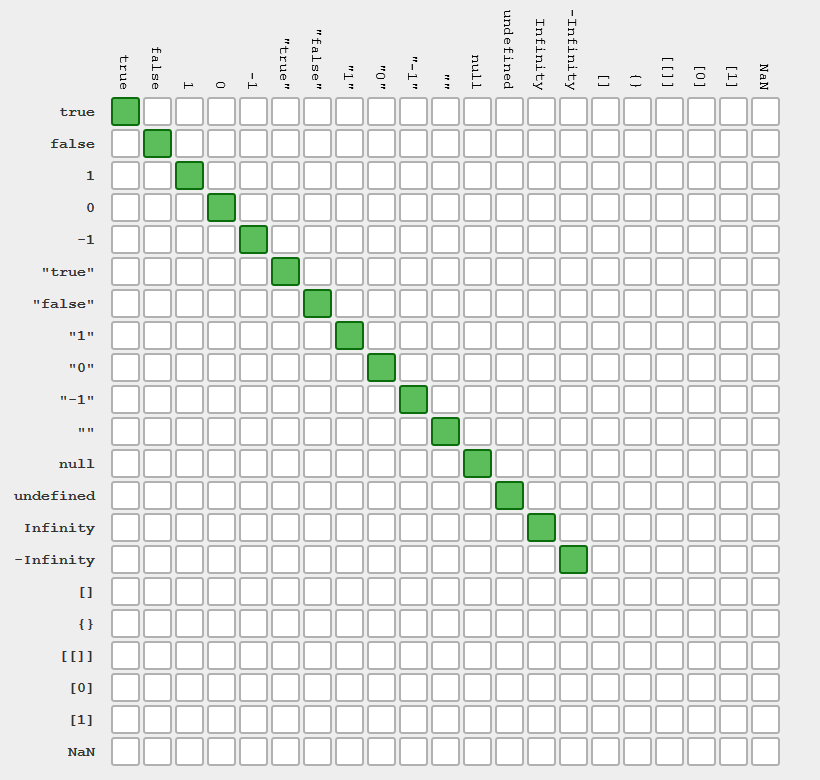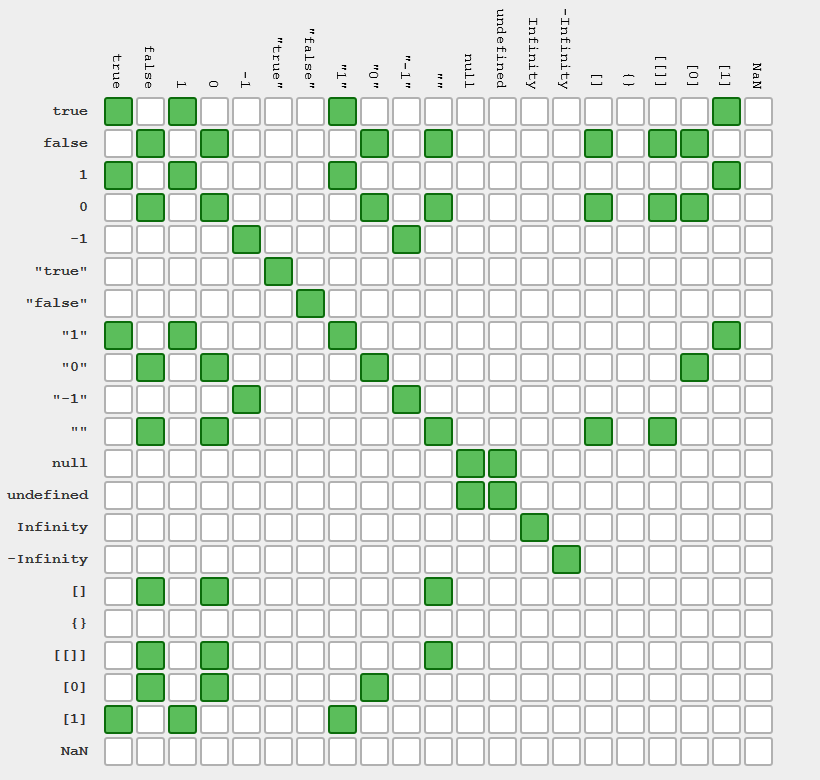In JavaScript there are two types of equality operator, the === and the !== , sorry I forgot to mention their evil twin == and != .
tsdr; (too short didn’t read) Use three equals unless you fully understand the conversions that take place for two-equals.
Basically what the triple equal (===) compares is if the value is equal and if the type is equal.
Lets look at an example below.
|
1 2 3 4 5 |
true == 1; //true, because 'true' is converted to 1 "1" == 1; //again true true === 1 //false "2" === 2 //false |
The reason for the === operator to return false is due to the fact that it does not do type coercion, but the double == does type coercion and implicitly tries to convert the value before comparing.
Some additional examples:
|
1 2 3 4 5 6 7 8 9 10 11 12 13 14 15 16 |
var x = [1,2,3]; var y = [1,2,3]; var z = x; alert(x === y); // false (even though x and y are the same type) alert(x === z); // true var str1 = "ab" + "c"; var str2 = "abc"; alert(str1 === str2); // returns true, because strings behave like value types var a = new String("123"); var b = "123"; alert(a === b); // returns false !! (but they are equal and of the same type) |
I hope the examples above give you the reason to stop using == and != since it convert things for you during comparison. So start using the triple === and !== .
Below are two tables that show the equality of == and === provide by http://dorey.github.io/JavaScript-Equality-Table/

x === y




Leave A Comment